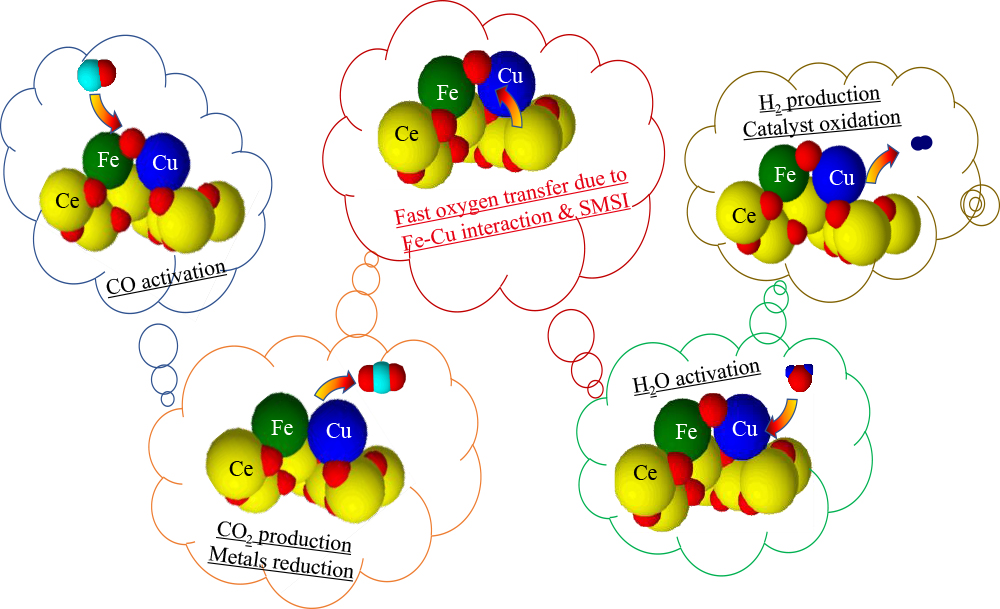As shown in Fig.3, the catalysts supported on ceria (F samples excluded) start to be reduced at about 200 °C and show two or three reduction peaks. The fresh F sample shows a single reduction peak at about 400 °C. This peak can be attributed to iron reduction promoted by ceria and/or ceria reduction promoted by iron oxide [
37,
38]. The H
2-TPR profile of the used sample is practically unchanged. The fresh C sample shows a TPR profile similar to those of other copper/ceria catalysts [
31,
33,
39], characterized by a peak at about 230 °C with a shoulder at about 200 °C. Equilibrating under reaction conditions causes a reduction of the overall H
2 consumption and separation of the main reduction peak into two overlapped peaks. According to the literature results, we found that in bimetallic iron-copper/ceria catalysts, copper-iron interaction significantly increases the reducibility with respect to the fresh catalysts [
15,
37]. A peak is detected at about 500 °C on iron-rich samples, corresponding to the reduction of iron oxide clusters. Accordingly, on increasing the copper content, this peak decreases, up to disappearing at Fe/Cu = 1. Interestingly, these clusters are reduced at temperatures typical of unsupported iron oxide, suggesting that they do not strongly interact with ceria, in agreement with the results by Kaihang Han et al. [
40] showing that on Cu-Ni/Si catalysts, the interaction between Ni–Cu and SiO
2 is reduced with the increasing of the Cu load. As stated above, the overall reducibility of these catalysts improves on bimetallic samples. The main reduction occurs in two quite overlapped peaks below 300 °C. By doubling the active phase content, i.e., comparing FC and 2(FC), the high-temperature peak appears again, suggesting the formation of isolated iron oxide clusters. The significant role of ceria can be identified by comparing the H
2-TPR profiles of fresh FC and FC-A. On the alumina-supported sample, a lower H
2 consumption is found, at about 300 °C. The bimetallic interaction shifts the reduction at lower temperatures [
16], and the strong interaction between Fe-Cu sites and ceria provides a synergistic effect. The reaction environment slightly changes the TPR profiles: a partial reduction is found as evidenced by the reduction of the areas of H
2 consumption.











